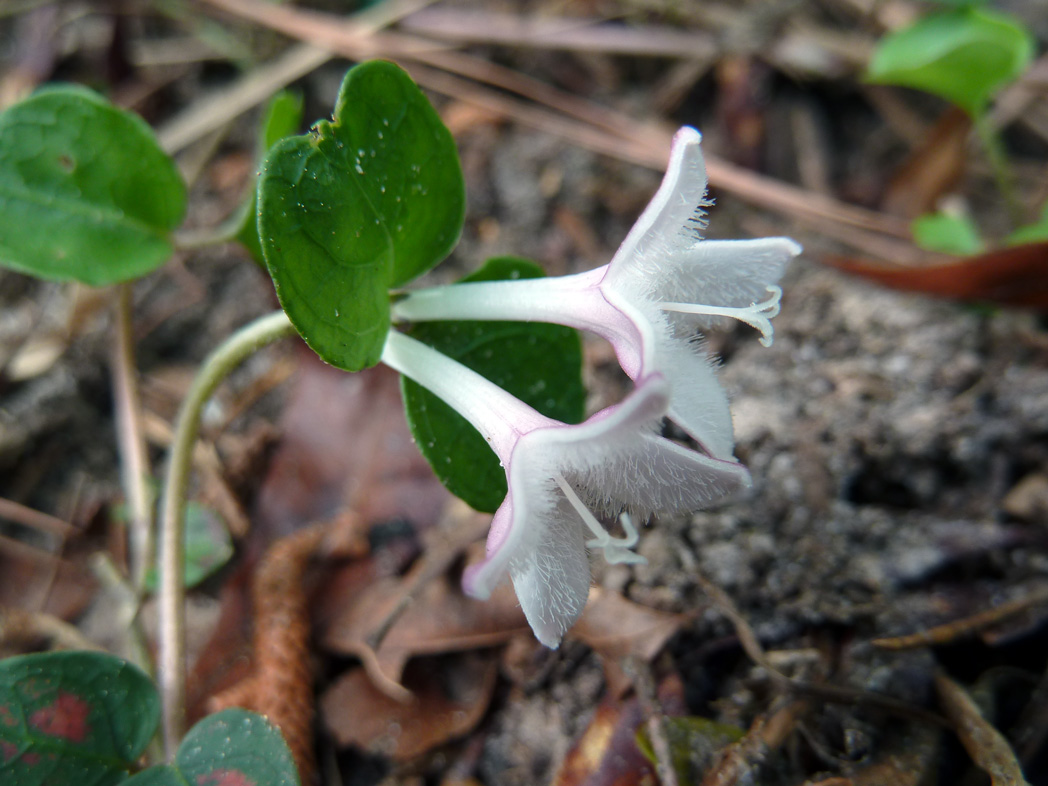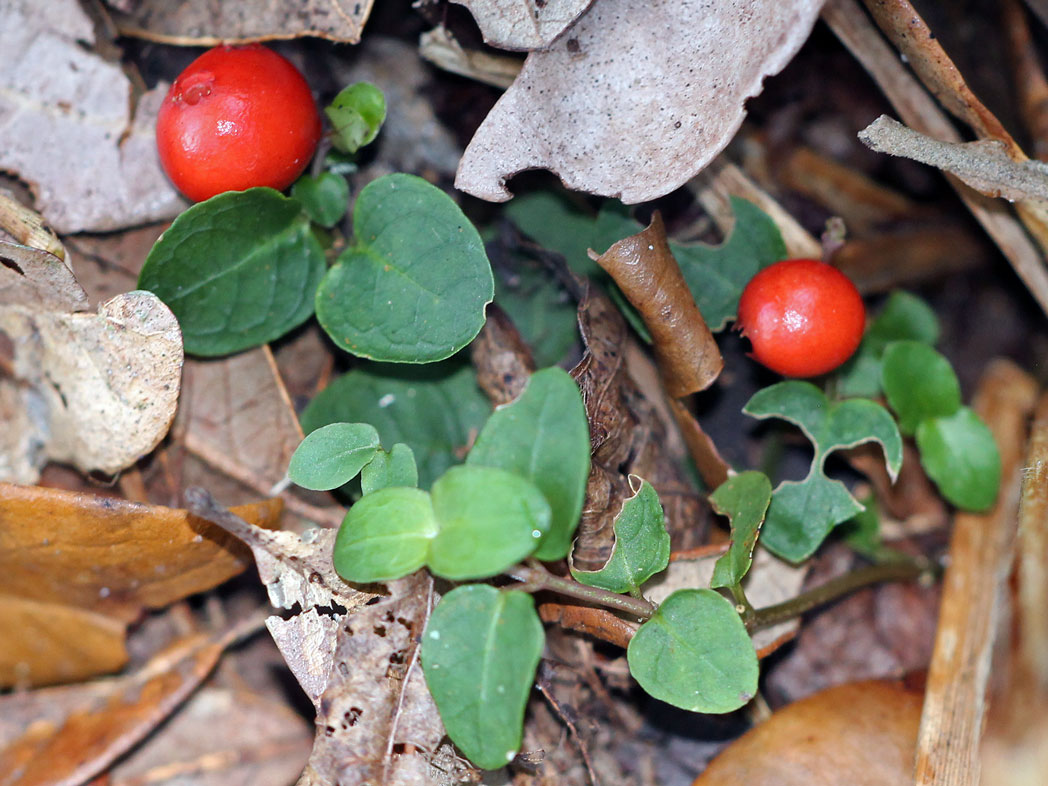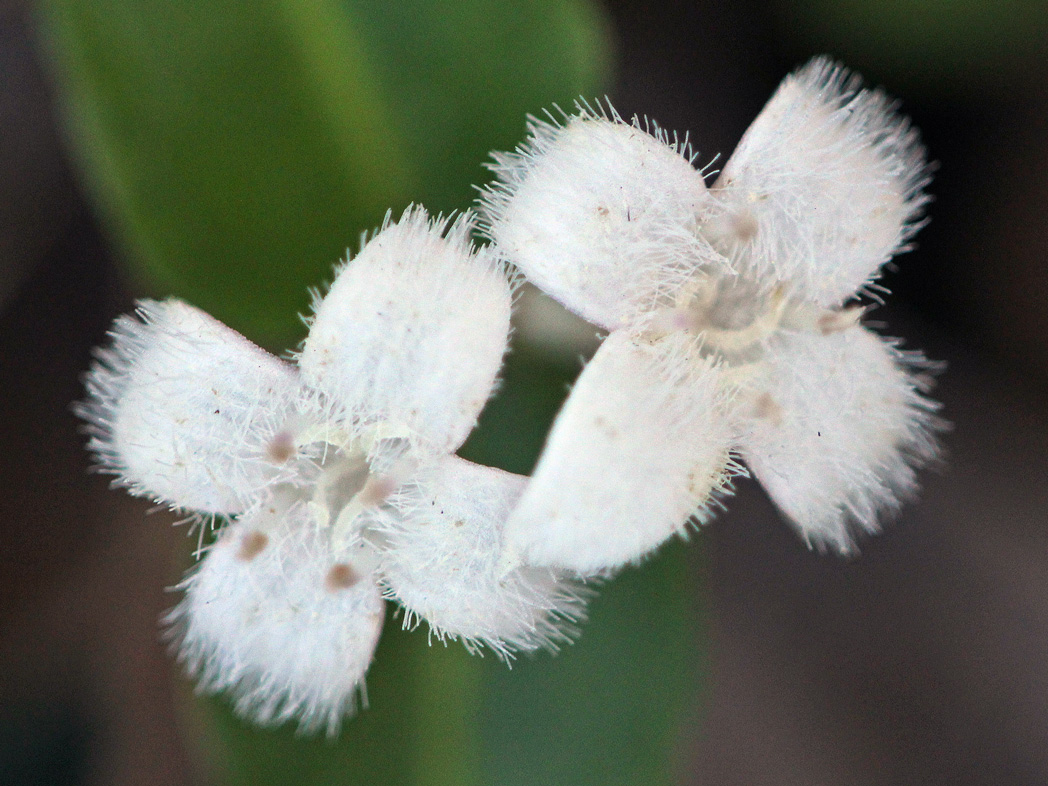Partridgeberry
Pictured above: Partridgeberry (Mitchella repens) by Mary Keim. Click on terms for botanical definitions. View as a PDF
Partridgeberry is a dainty mat-forming vine with fuzzy white flowers. It is found on hardwood forest and mesic hammock floors and along seepage slopes in North and Central Florida. Its fragrant flowers typically bloom spring through fall, attracting a variety of insects, especially bumble bees. Its fruits are enjoyed by birds and small mammals. The fruits are edible to humans, too, and can be eaten raw or made into a jam, sauce or pie. The taste can vary from bland to sour or cranberry-like. Native Americans made a tea from the leaves and berries that was used to ease childbirth.
Partridgeberry’s white to pinkish-white flowers have a funnel-shaped corolla that opens into four (rarely five) petals. The petal tops are densely covered in fine white hairs. The flowers are born in pairs. Each flower bears its own ovary, but they fuse into a single red drupe. Both flowers must be pollinated for the fruit to form. The fruits have two dimples (one from each flower) and contain eight seeds. The plant’s shiny, dark green leaves are simple and ovate to cordate with a conspicuous yellowish midrib. They are oppositely arranged. Stems are slender and prostrate. They do not climb, but root at the nodes.


The genus name Mitchella was designated by Charles Linnaeus to honor his friend, English physician John Mitchell (1690–1768). The species epithet repens is from the Latin repo, meaning to creep or crawl, and refers to the plant’s low, trailing habit.
Family: Rubiaceae (Coffee, bedstraw or madder family)
Native range: Panhandle, north and central peninsula
To see where natural populations of Partridgeberry have been vouchered in Florida, visit florida.plantatlas.usf.edu.
Hardiness: Zone 8A–10A
Lifespan: Evergreen perennial
Exposure: Partial to full shade
Growth habit: 1–2” tall
Propagation: Seed, division, cuttings
Garden tips: Partridgeberry can be used as a groundcover in shady landscapes. It forms dense mats, but is a rather small plant, so a single specimen may not cover much area.
Plants are occasionally available from nurseries that specialize in Florida native plants. Visit www.PlantRealFlorida.org to find a nursery in your area.

